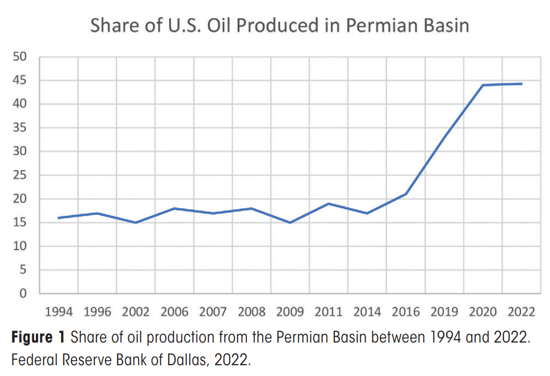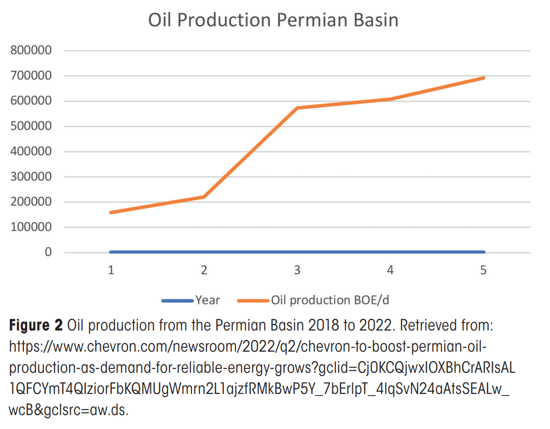First Published: First Break, September 2022
Marianne Rauch, Aravind Nangarla, M. Falk and M.Lovell showcase an innovative approach and its application using the LambdaRho-MuRho cross plot for the estimation of rock properties.
The Permian Basin contains significant oil and gas-bearing shale deposits. Extending over 55 counties in West Texas and southeast New Mexico, it covers a vast region. It is the largest contributor to the oil shale boom in the US and in February 2022 accounted for more than 40% of US oil, Figure 1 (Federal Reserve Bank of Dallas 2022). Figure 2 displays the increase in produced oil from this basin from 2018 to 2022, Chevron News Room 2022.


During the first years of production from these tight shales, seismic data weren’t considered to be essential for locating and drilling high-producing wells. However, the value of seismic data are now recognized and extensively used to design and execute lateral drilling programmes into the most prolific shale units. The shale deposits are widespread but highly heterogeneous in composition. Specifically notable is the lateral variability of Total Organic Content (TOC) and rock properties, such as porosity within the formations. In addition to varying shale properties, carbonate units were deposited simultaneously and are difficult to distinguish when only using reflectivity. Traditionally, the sonic and density values were inputted into supervised and non-supervised neural network applications to estimate rock properties. However, it is difficult to calculate density from conventional seismic data, and the results are typically questionable and have a high uncertainty element. To calculate density from seismic data we need long offsets that are usable; most of the time, these data are not available (Aki, K., 1980). This study showcases a unique approach and its application using the LambdaRho-MuRho cross plot to estimate rock properties. The LambdaRho and MuRho values are derived from pre-stack inversions and are correlated to existing well data over the zone of interest. The results indicate that this is a more elegant and valid methodology, especially since it seems to produce a better, more accurate distinction between shale and carbonate domains.
Geological setting
The three main sub-basins of the Permian Basin are the Delaware Basin, Midland Basin and Central Basin Platform, Figure 3. The
most prolific shales in the Delaware Basin are the Bone Spring and the different members of the Wolfcamp. Another high-producing shale oil basin is the Midland Basin, where the best reservoirs are within the Sparberry and Wolfcamp Formation. In this publication, we are concentrating on the Bone Spring and Wolfcamp shales.
The Wolfcamp Shale, an organic-rich formation, extends in the subsurface in all three sub-basins of the Delaware Basin, Midland Basin, and Central Basin Platform and is the most prolific....
<continued>
Download the full article using the link at the top of the page.

